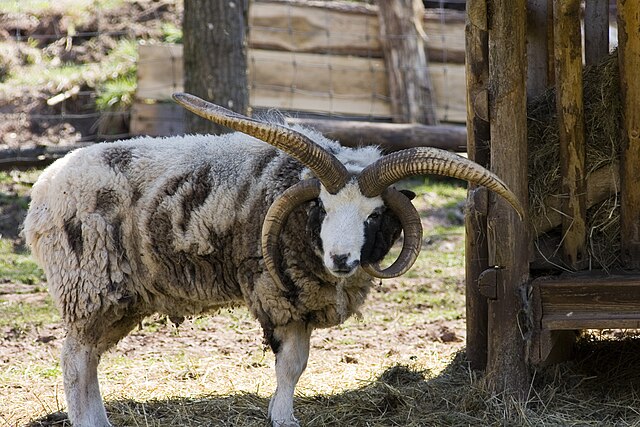Top Qs
Timeline
Chat
Perspective
Polycerate
Animal with more than two horns From Wikipedia, the free encyclopedia
Remove ads
Polycerates (meaning "many-horned") are animals with more than two horns.

Sheep
Polyceraty has been observed in ancient sheep remains dating to c. 6000 BCE from Çatalhöyük in modern Turkey.[1]
Polycerate sheep breeds include the Hebridean, Icelandic,[2] Jacob,[3] Manx Loaghtan, Boreray and the Navajo-Churro. One example of a polycerate Shetland sheep was a ram kept by US President Thomas Jefferson for several years in the early 19th century in front of the White House. In the spring of 1808 this ram attacked several people who had taken shortcuts across the square, injuring some and actually killing a small boy.[4] Because of selective breeding, polycerate sheep are increasingly rare in the British Isles[5] and Spain,[6] but some breeds can still be found in Asia.[7] One example is the black-faced sheep of Tibet.[8]
Remove ads
Goats
There have been incidents of polycerate goats (having as many as eight horns),[9] although this is a genetic rarity thought to be inherited. The horns are most typically removed in commercial dairy goat herds, to reduce the injuries to humans and other goats.
4 horns are the norm for the Austrian goat breed Vierhornziege (four-horned goat). [10]
Wildlife

Antelopes can also be polycerate, for example, the blue wildebeest (Connochaetes taurinus). Both sexes normally possess one pair of large curved horns.[11]
Mythology
Cerastes, a legendary Greek horned serpent, is sometimes described with two horns or with four small ones.
References
Wikiwand - on
Seamless Wikipedia browsing. On steroids.
Remove ads
